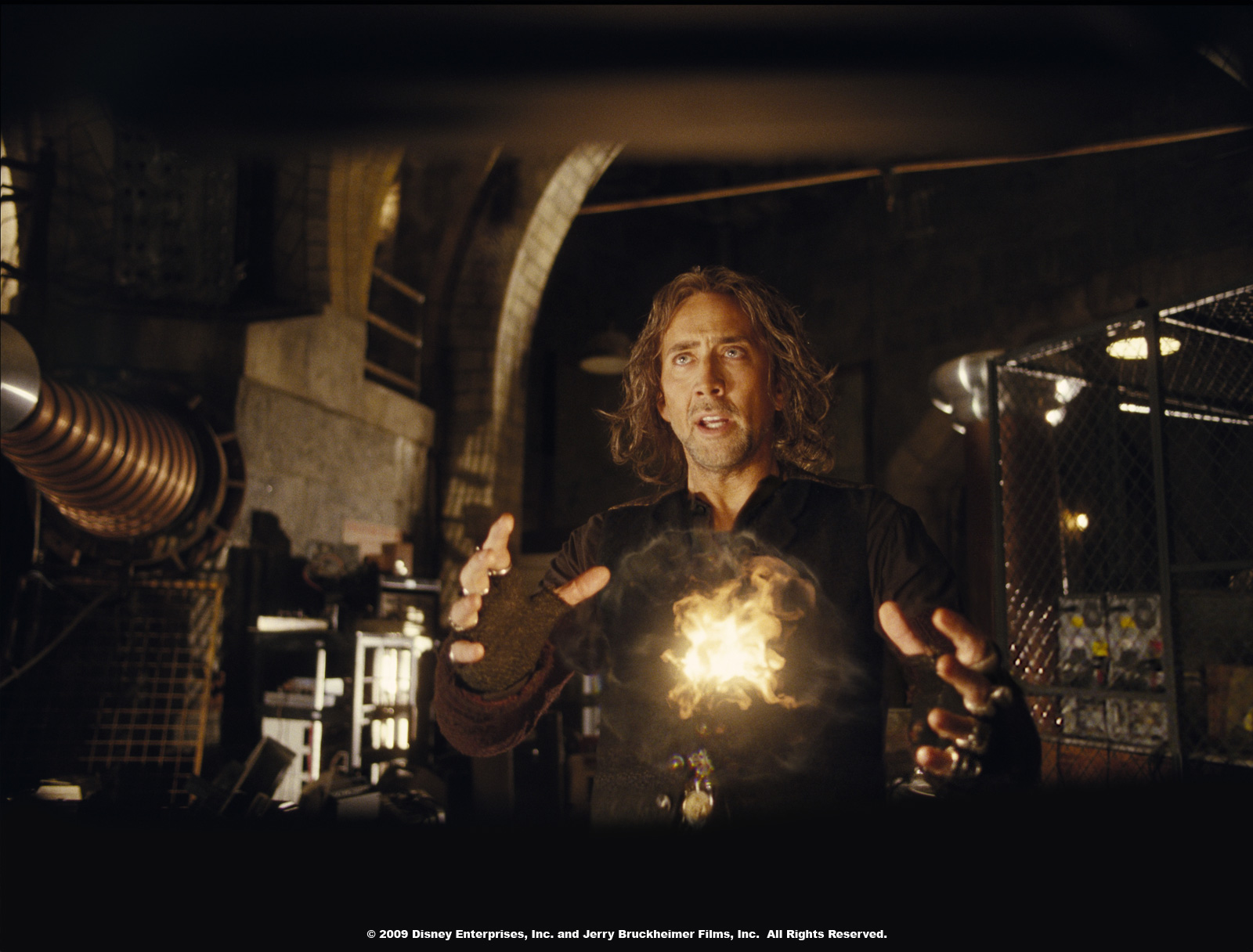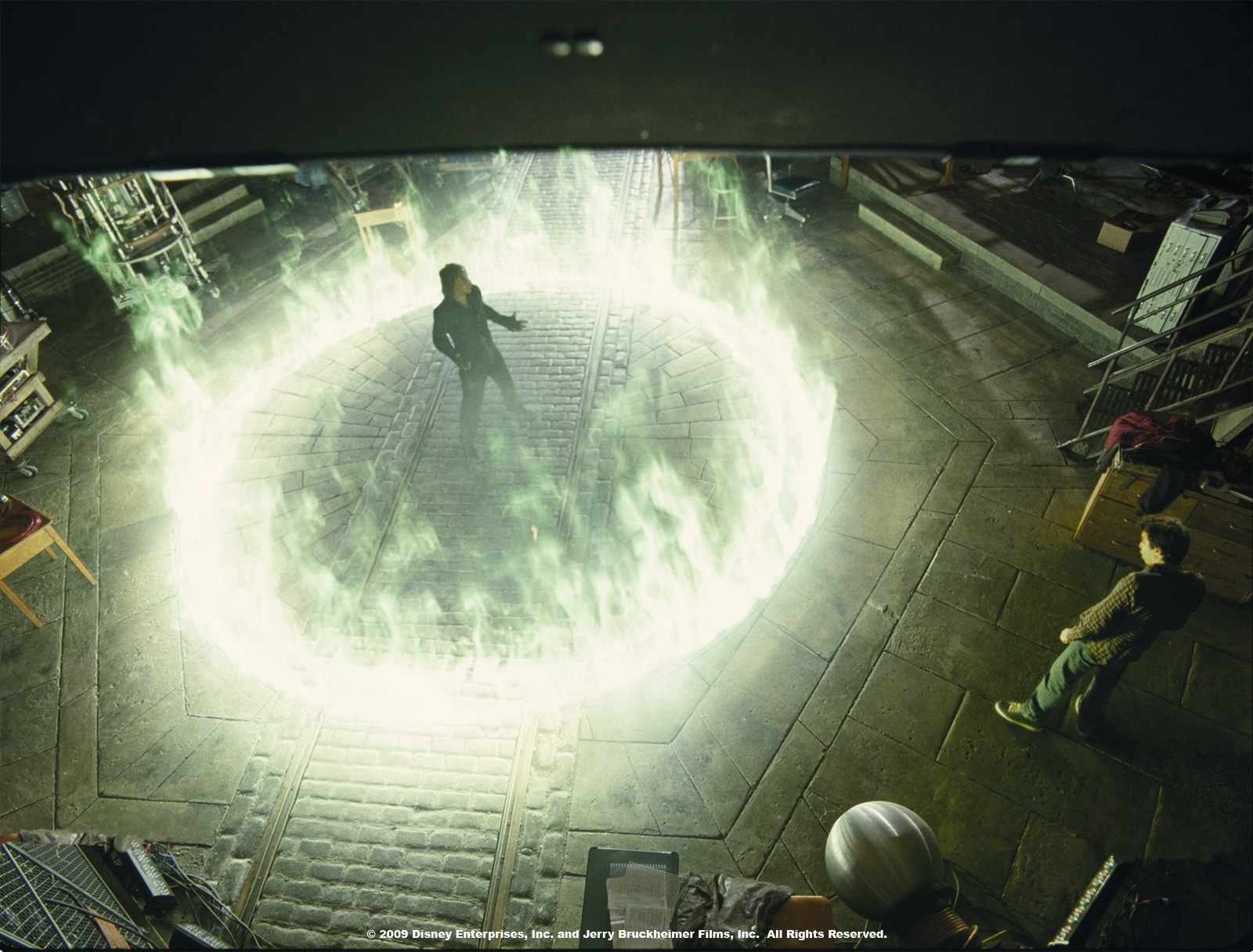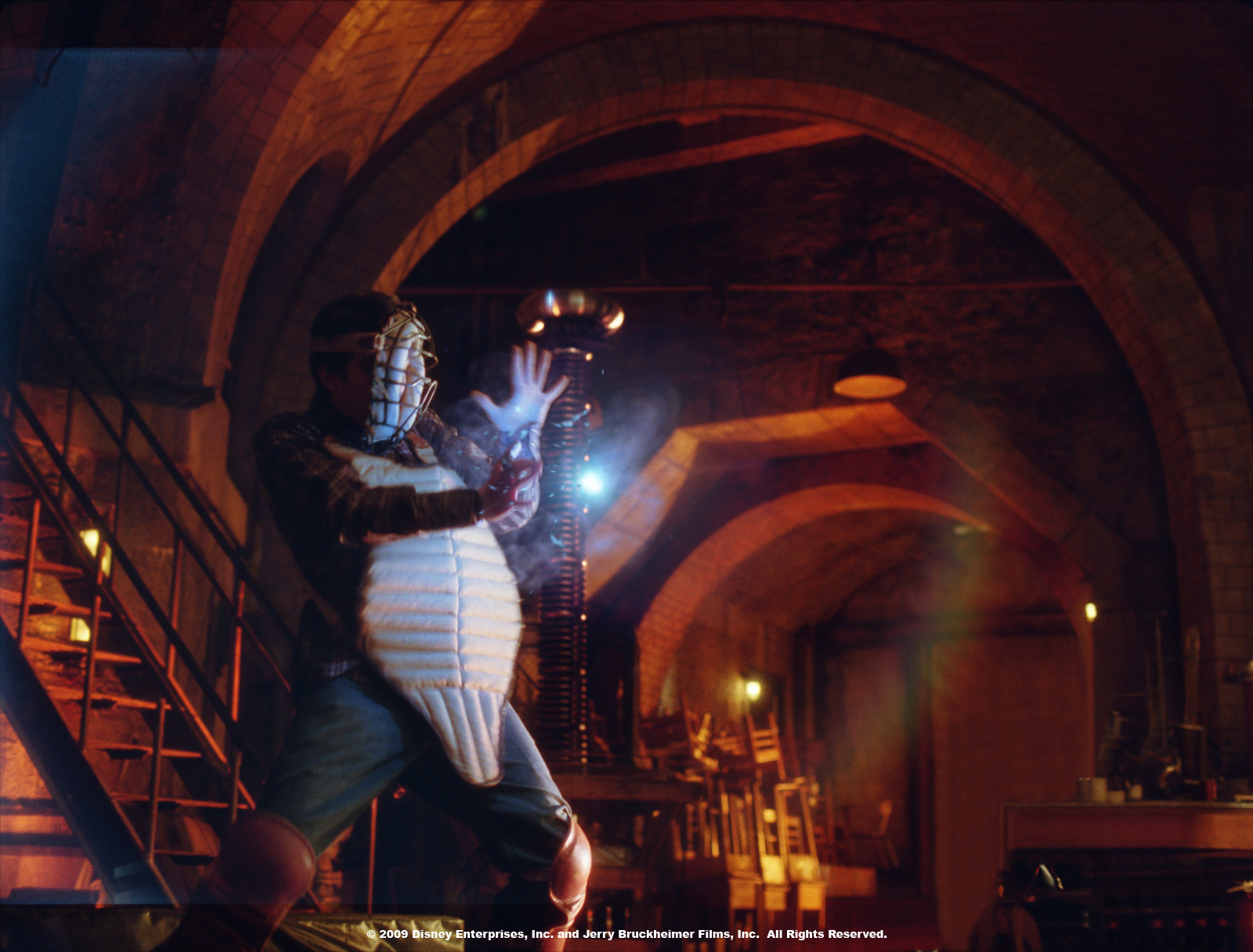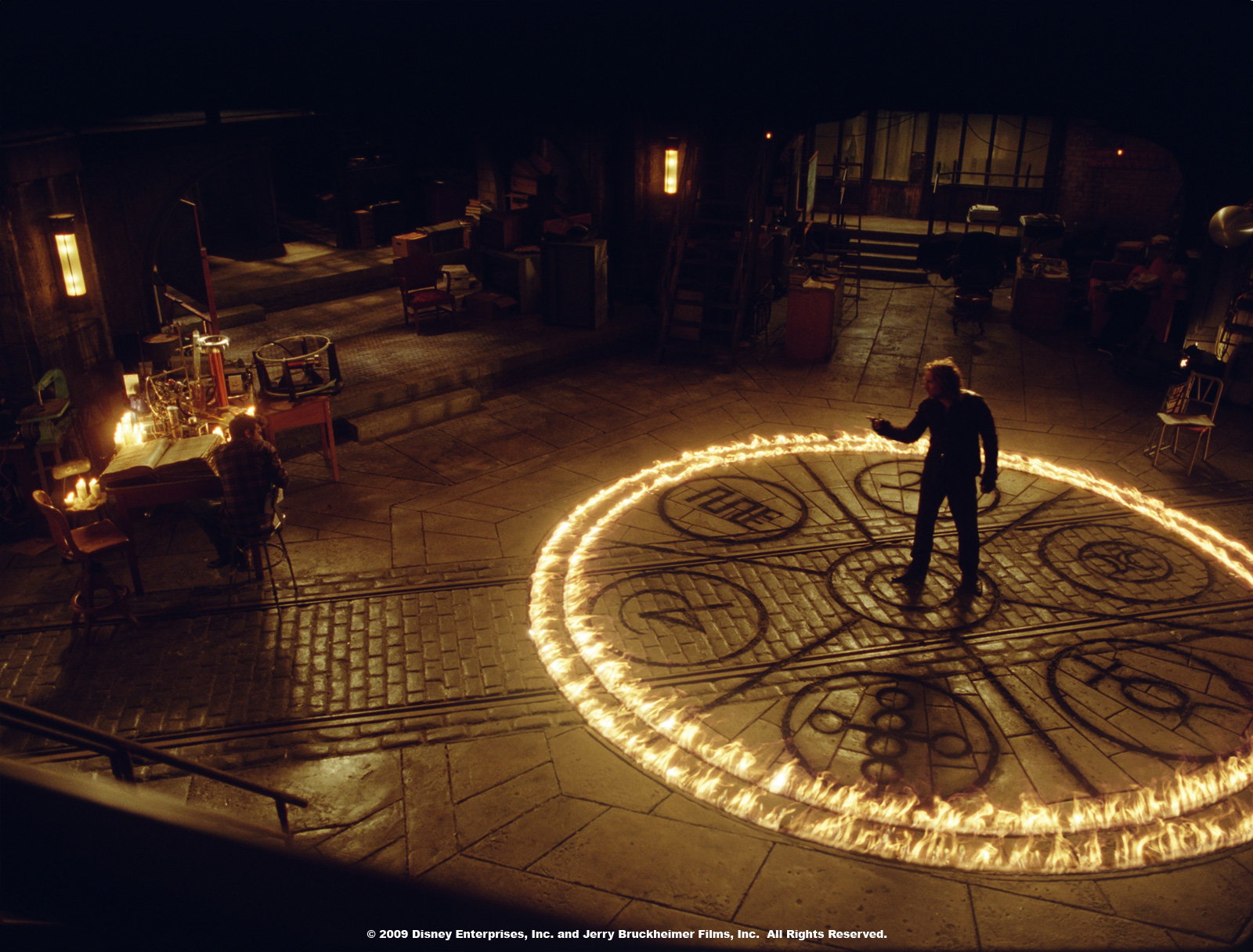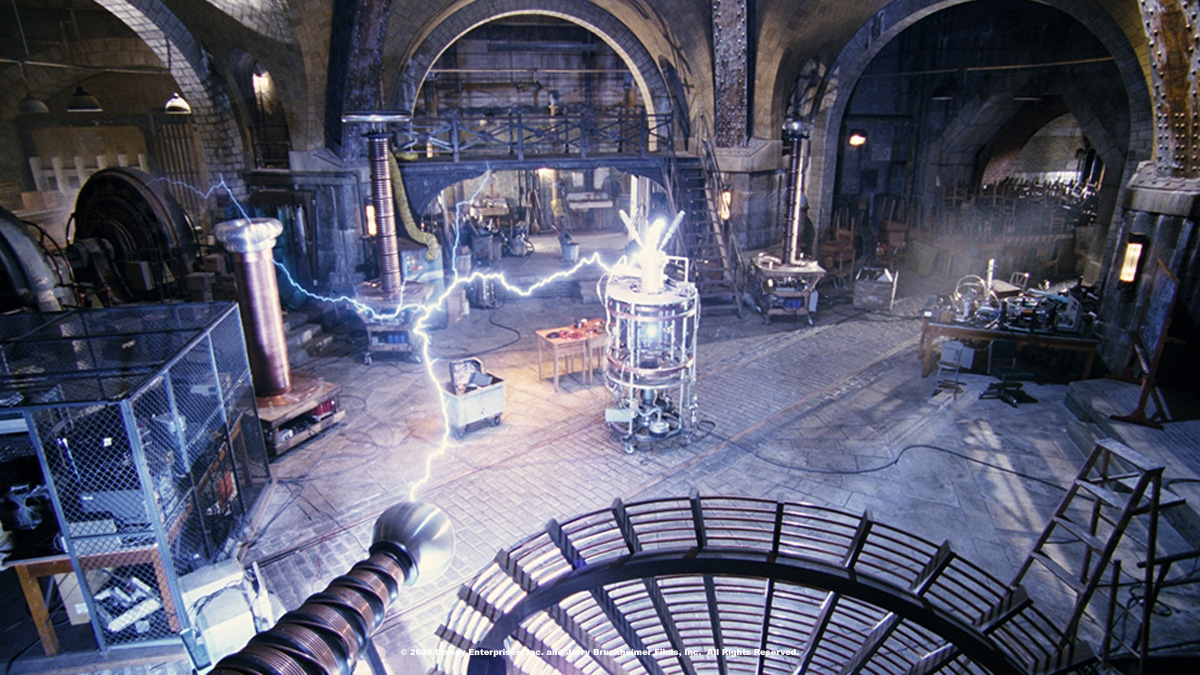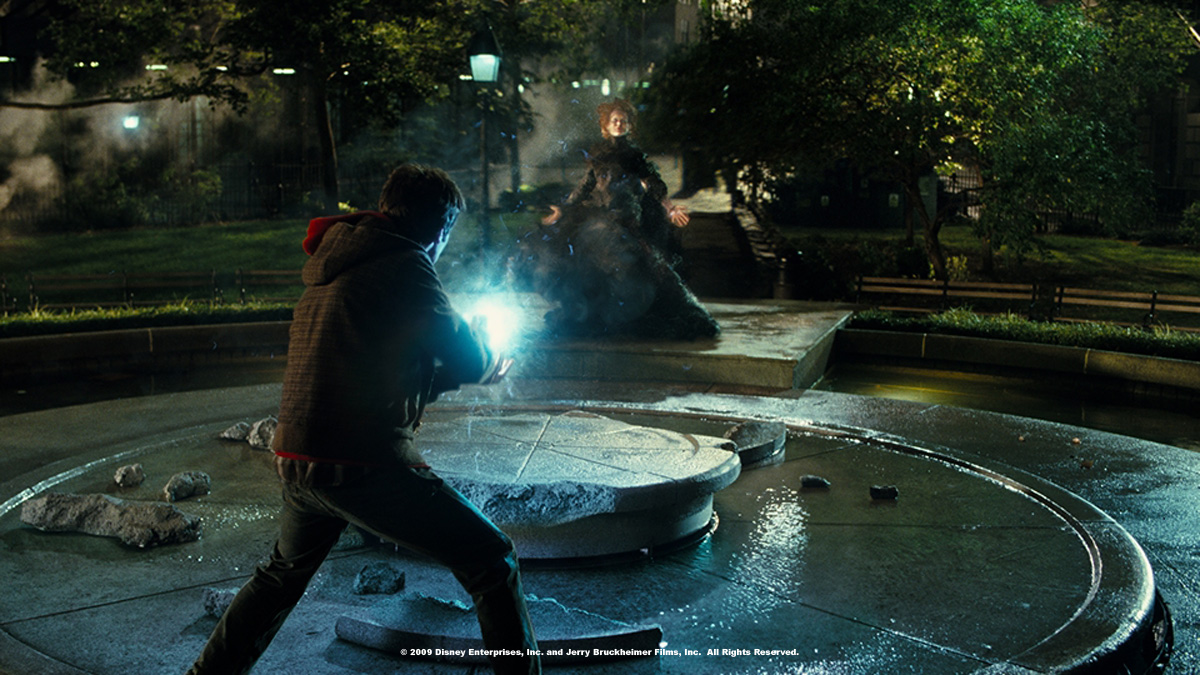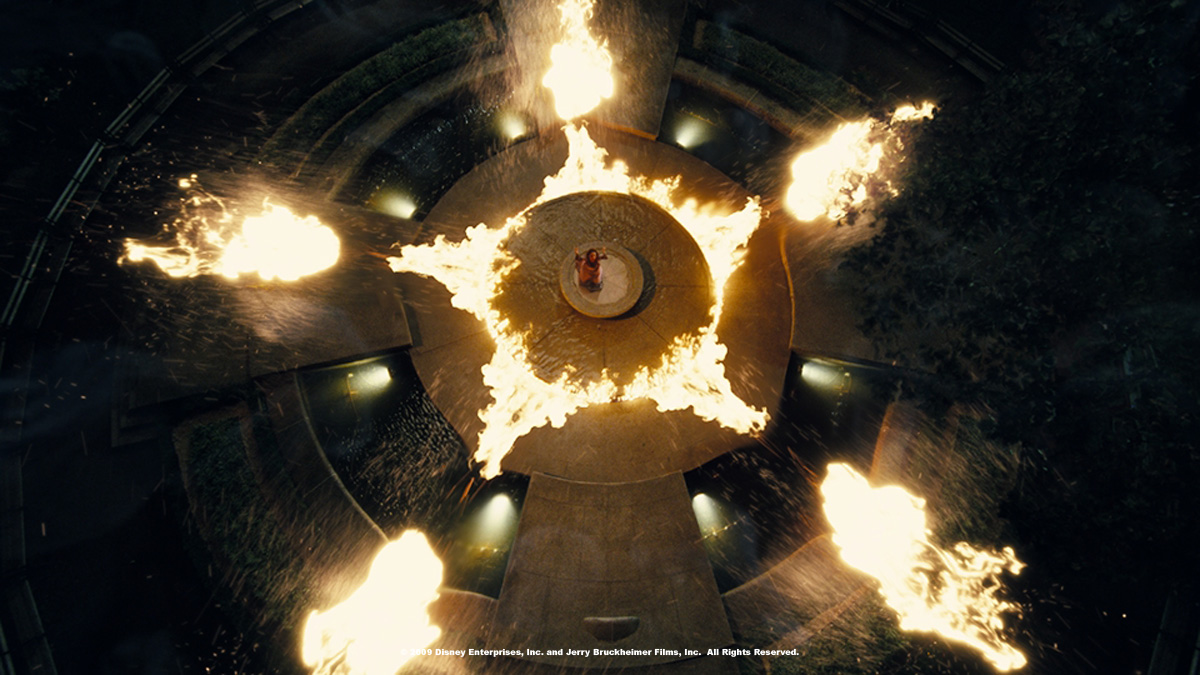After several years at London Computer Film Company, Adrian de Wet goes to California at ESC Entertainment to work on THE MATRIX RELOADED. Back in London, he worked for many studios such as Framestore, MPC and Double Negative, that he joined in 2007.
What is your background?
After graduating in Fine Art I began my career at London’s Computer Film Company, spending 8 years working on numerous feature films and commercials, before moving to ESC Entertainment in California to work on the Wachowski’s MATRIX RELOADED. After returning to the UK I was Framestore compositing supervisor on two HARRY POTTER films (Azkhaban and Goblet of Fire), among other projects. I was then hired by MPC as 2D supervisor on POSEIDON and as VFX on-set supervisor on the TV series ROME. I joined Double Negative in 2007. Before working on SORCERER’S APPRENTICE I was digital fx supervisor on Guillermo del Toro’s HELLBOY II.
How was your collaboration with director Jon Turteltaub and production VFX supervisor John Nelson?
From day 1 of preproduction the collaborative process was in full swing. Jon Turteltaub was always very receptive to other people’s ideas. From the initial meetings in New York, through to principal photography, and continuing into post, there were constant discussions between Jon Turteltaub, John Nelson, and the team at Double Negative. Of course, in post, Jon Turtletaub and John Nelson were in LA and we were in London, so we made full use of cinesync, which is a tool for visual communication which enables one to write on media files that are played back in sync. Most of our creative development was done using this method of collaboration.
What are the sequences made by Double Negative?
We were responsible for around 380 shots over 14 sequences. The sequences were:
– Fantasia (FS): Dave uses magic to bring the mops, sponges etc to life so they can clean up the lab. It all quickly gets out of control and pandemonium ensues.
– Dave’s Lab (DL): Dave fires up his Tesla coils and they spark noisily and brightly.
– Tesla sing (TS): To impress Becky, Dave uses resonance to make the Tesla coils produce musical notes and therefore play tunes
– Merlin’s Circle (MC): Balthazaar Blake uses magic to burn the Merlin’s circle into the floor of dave’s lab. Also he unfolds the pocket Encantus.
– Training « B » (TB): Balthazaar trains dave in the use of fireballs and vacuum spheres. Also the Tesla coils strike dave.
– Training « C » (TC): Balthazar trains Dave in the use of Plasma as a weapon.
– Drake’s Parasites (DP): Horvath kills Drake Stone by using the parasite spell.
– Abigail (AM): Horvath kills Abigail by using the Parasite spell
– Veronica Fusion (VF): Veronica saves Balthazaar by fusing with Morgana’s soul, Balthazaar locks them in the Grimhold for eternity.
– Quick Rug (QR): Balthazaar sinks into the magic quick-sand rug in drake’s apartment.
– Morgana Birth (MB): Horvath releases Morgana/Veronica from the Grimhold.
– Battle Begins (BB): Morgana / Veronica casts fiery energy to form the pentagram over lower Manhattan from which the Dark Energy rises.
– Wall Street Bull (WB): Horvath brings to life the bronze Wall Street Bull which charges around trying to kill Balthazaar.
– Final Battle (FB): the final showdown between Spectral Morgana and Dave.
What references and influences have you received from the director for the magical effects like plasma?
We got a verbal brief from the director (Jon Turteltaub), which was that it had to look real and it had to be based in physics, rather than look like traditional, cinematic « magic ». He was keen that it did not just look like a « cool visual effect ». John Nelson fully agreed with this in principal but added that it should, however, also look « special ». He sent us a large amount of reference of natural phenomena such as lightning in clouds, plasma, slow-motion lightning, fire etc.
How did you create these magical effects?
For the plasma balls we started by looking at images of « real » plasma – there’s quite a lot of it on YouTube – which is a real physical entity: it’s actually ionised gas, which can be created in a microwave oven (albeit dangerously). What these reference videos showed us was that when plasma is created it only lasts a few seconds before it dissipates due to instability. It also looks like a super-bright hot blob, and is therefore pretty much burned out and flat in exposure. We started out matching this real look in cg, but we ll agreed that it wasn’t particularly compelling to look at. But at least our starting point was in the physical realm, which we embellished with more detail, more instability, and a few more particulate and fluid elements such as cg smoke and dust. All the glows, lens flares, flickering and additional interactive light were mostly controlled in Shake (although a fully 3D environment lighting pass was supplied to compositing to dial in to taste). We gave the plasma ball a solid, hot core and made sure that it didn’t get too buried in the glow, which tended to make it look soft, and added, on a few intermittent frames, some small static electricity discharges to add further detail.
What is the system used by the director of photography to simulate the magical effects on the actors and the set?
The director of photography, Bojan Bazelli, employed the use of portable LED lights which were very bright but small enough to fit into the actors’ hands. We used various different colour temperatures depending on what the effect was: a fireball was cooler and redder compared to the blueish heat of a plasma ball. These interactive lights were invaluable for integration of the cg into the plate.
Did you create previz for some sequences?
The biggest previz requirement was for the Fantasia sequence which I will go into more detail about below. We also previz’d parts of the end battle: namely the fiery energy traveling across NY, the pentagram in the sky over manhattan, the plasma ball fight between Morgana and Dave.
Can you talk more about the famous Fantasia sequence and its brushes. How have you designed and create it?
Right from the start of pre-production meetings JT impressed upon us the need for the Fantasia sequence to be worthy of the original animation. We started previzing the sequence back in January 2009. JT gave us a few story beats as a starting point and we started storyboarding from there. Working closely with John Nelson, we produced a library of characters and a library of actions which we then put into previz, under the leadership of our animation supervisor, James Lewis. Eventually we had a previzzed sequence that was around 9 minutes long – around 3 times as long as it should have been, so we had to make some brutal cuts.
John Turteltaub is all about character and comedy. He would constantly remind us that rather than the mops and brooms just animating and floating around, we had to somehow get across the idea that Dave had given them life, and that they were imbued with character and personality. We spent a lot of time rigging the props to enable our animation team to animate with expression, and we carried out lots of character studies of each object to decide what kind of movements it was capable of. For example, the mop rig had a slider control to decide what percentage of the mop head was a dynamic cloth simulation and what proportion of it was keyframe animated.
As we approached principal photography the sequence began to take shape in previz but it still was not entirely locked down and finished. During the shoot we had puppeteers wearing green lycra suits controlling real mops and brooms: particularly where they are interacting with Dave. Most of the real ones were left in (after we cleaned out the green guys), but in post it soon became apparent that there were not enough props in the scene, there was not enough chaos. So most of the mops, brooms and sponges that you see in the final sequence are cg.
Have you used real fire and water or is it all CG?
For fantasia, even though the sfx guys flooded the set successfully with ankle-deep water, most of the water splashes from the props are cg, and in the shots where Balthazaar disperses the water, all the water and all the props are cg.
Almost all of the fire in our vfx shots is CG, namely:
– The Merlin’s Circle fire when Balthazaar burns the symbol into the floor of Dave’s lab.
– The fireballs, vacuum sphere, flames etc when Balthazaar trains Dave in the use of fireballs.
– The ring of flames on the floor when Balthazaar walks across just before he trains Dave is the use of Plasma.
– Almost all the fire and embers (fiery energy) that is cast by Veronica/Morgana and travels down the streets of Manhattan.
– The fiery pentagram over Manhattan.
– Morgana’s torrent of fire in the Final Battle (which Dave defends using a vacuum sphere).
– The ring of fire cast by Dave which brings Balthazaar back to life after the final showdown.
Can you tell us about the shooting of the scene of the bull’s attack and how did you create it?
We shot this scene at the bowling green location at night. As a placeholder for the bull we used a couple of c-stands with a rope in between that matched the bull’s proportions. For a lighting reference we created a fifth-scale miniature of the bull with matching colour, texture and reflectance, and we placed this where the bull would be and ran a few seconds of footage of it for every shot.
The flip cars were both sfx rigged (although we replaced a few shots with a cg car to get the right deformation and destruction) and we enhanced them all with explosive glass / debris, and even put an airbag inflating in one.
Meanwhile, back at Double Negative, the challenge was to create a creature that looked like the bronze Wall Street Bull statue but could also run and charge like a bull, and at the same time look mean, angry and muscular. We started off with a lidar scan of the bull statue and tried to rig that, and quickly found that the actual statue, rather than being an anatomically correct bull, is more a piece of expressive art: for instance it is leaning heavily over to one side, which meant that when we tried to make it run, it ran with a limp. Also if you look at it straight in the face it appears to be smiling rather than sneering, which meant we had to change its expression to prevent it from looking comical. Another rigging challenge was the muscularity of the bull. It is supposed to be bronze, metallic, rigid – so we tightened up the muscles and did not allow stretching, compression or jiggle – but that made it look like a tin robot with badly constructed joints – so we had to find a compromise between a rigid metal bull and a more natural, muscular bull.
Have you had to reconstruct some sets in 3D?
We built a fully textured 3D version of Dave’s lab using tiled hi-res HDR photography and lidar data. This aided with clean up on a few shots and was essential to get accurate camera match-moves.
About the final sequence, all these particles effects should have blow your render times?
If i remember correctly, the simulations for Morgana’s torrent of fire were the longest running processes on the Final Battle. The smoke trails from the plasma balls were also quite heavy. For Spectral Morgana herself, I think she was averaging at around 6 hours a shot.
How did you create Spectral Morgana and her effects?
The brief from JT was that Spectral Morgana should be unlike anything we’d seen before but still be compelling. It was important to the story to get across the impression that no matter what Dave throws at her, he cannot kill her, because she can shape-shift or dissipate to avoid plasma. This is where the idea came from for the particle sim, for her to move like a « shoal of fish » rather than a regular, hard-edged 3D creature. So we started by making an accurate body track of Alice’s performance, which included a cloth track for her clothing. Then we would use that 3D volume to create our particle sim, with particles swarming around, leaving the main group, swirling back in and remaining part of the swarm. We tried to match the motion and feeling of large shoals of fish, particularly in the shot where Dave tries to throw a plasma ball at her and she opens up to let the plasma fly through.
We encountered a few issues when we swapped out Alice for a particle sim. One was that we lost a lot of detail in her face and therefore her performance became unreadable. To address this we rendered various levels of « tightness » of simulation: the tightest being particles that stuck most to the original surface of the body track and the loosest being the ones that moved furthest away. Then these levels of particle motion could be dialed in to taste. Another slight problem was that Spectral Morgana looked a little thin if she consisted of just a particle layer, so we incorporated a core layer which consisted of a seething mass of worm-like lampreys to add an extra level of density. We also added in some flickering internal light to represent her « spectral » energy which helped to give her volume.
Was there some shots that prevented you from sleeping?
Initially we were all a bit daunted by the sheer volume of work required in the fantasia sequence, and the fact that it had to do justice to the original Disney animation made it seem like a mountain to climb. But we found that when we really got in to it it was fun, exiting, and satisfying: because at least you know what it has to look like at the end of the day. Unlike Spectral Morgana. So I think if there were any shots that stopped me sleeping it was probably some of the creative development of Spectral Morgana, because that really was a journey into the unknown.
What was the size of your team?
I think our crew size reached approximately 250 artists, spread over 12-18 months.
What did you keep about this experience?
1. Preparation is the Key.
2. Insist on shooting what you need.
What is your next project?
Spending time with my family. Next project not until much later in the year.
What are the four films that gave you the passion for cinema?
2001: A SPACE ODYSSEY, BRAZIL, THE SHINING et ALIEN.
A big thanks for your time.
// WANT TO KNOW MORE?
– Double Negative: Dedicated THE SORCERER’S APPRENTICE page on Double Negative website.
© Vincent Frei – The Art of VFX – 2010


